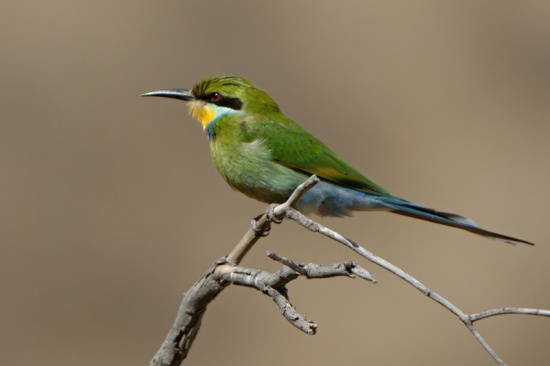m (→Taxonomy) |
m (→Taxonomy) |
||
| Line 8: | Line 8: | ||
Sub-Saharan [[Africa]]. | Sub-Saharan [[Africa]]. | ||
==Taxonomy== | ==Taxonomy== | ||
| − | Four subspecies are recognised. These, with their distributions are as follows: | + | Four subspecies are recognised. These, with their distributions, are as follows: |
* ''Merops hirundineus hirundineus'' (Southern Africa: SA north to Angola and Zambia) | * ''Merops hirundineus hirundineus'' (Southern Africa: SA north to Angola and Zambia) | ||
Revision as of 13:12, 15 April 2010
| This article is incomplete. This article is missing one or more sections. You can help the BirdForum Opus by expanding it. |
- Merops hirundineus
Identification
20-22cm. Green, yellow throat, blue gorget and black eye stripe and beak. Sexes are alike.
Distribution
Sub-Saharan Africa.
Taxonomy
Four subspecies are recognised. These, with their distributions, are as follows:
- Merops hirundineus hirundineus (Southern Africa: SA north to Angola and Zambia)
- M. h. chrysolaimus (West Africa: Senegambia to CAR)
- M. h. heuglini (East Africa: Uganda to Ethiopia)
- M. h. furcatas (South-Central Africa: southern DRC and Kenya south to Angola and Mozambique)
Habitat
Savanna woodlands.
Behaviour
The diet includes bees, wasps and hornets, which are caught in the air.
They nest in sandy banks, or similar flat ground. They make a relatively long tunnel in which the 2 to 4 spherical, white eggs are laid. These birds feed and roost communally.




